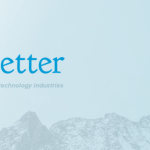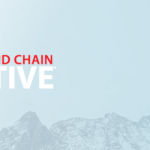The evolving topics to keep a close watch on in the coming months
Looking back at 2020, I don’t believe anyone could have predicted the dizzying pace of change we all experienced. The swift arrival of the global coronavirus pandemic—and the resulting societal adaptations like lockdowns, remote work, mask-wearing, and social distancing—and the national political environment made for a year unlike any other in modern history.
And as we look to the future and particularly toward the post-pandemic reopening of businesses and resumption of public life, the life sciences industry will play a key role. With these factors in mind, we’d be wise to consider some of these emerging trends.
Coronavirus vaccine access will dominate industry news
People are justifiably thrilled that vaccines that prevent Covid-19 are coming online and that vaccination programs are in full swing. Leading offerings from Pfizer-BioNTech, Moderna and J&J are currently reaching top-priority caregivers, patients, government workers, educators and the elderly, and will soon reach other high-risk citizens and demographic groups.
Large-scale efforts are underway to provide mass vaccinations. As increasing amounts of vaccine enter the market, the industry and public will remain hyper-focused on vaccine timing and availability, as well as distribution models, because the average person remains justifiably concerned about access to one of the approved vaccines.
It is important to note that the massive effort to get Covid vaccines out to the public will not derail the rest of the work of the pharma and biotech industries. Company specialization is so strong today that organizations focused on specific disciplines—such as oncology drugs—can still work effectively on the pandemic, while innovating in other sectors without any disruption.
Biosimilars will help tackle drug pricing challenges
According to the FDA, biosimilar and interchangeable drugs represent “the fastest-growing class of therapeutic products in the United States.” In addition, “biosimilar and interchangeable products can offer additional treatment options, potentially lowering healthcare costs,” the agency notes.
As such, biosimilars will represent a price-competitive treatment option for many patients, and pharma/biotech companies are rushing to develop them as alternative therapies and potentially lucrative sources of new revenue. As recently as the summer of 2020, some 28 biosimilars were approved, and 18 had already been launched. In addition, 79 biosimilars are in the approval pipeline. Expect additional focus on this category of drugs in 2021 and beyond, as the industry offers new treatment options—and meaningfully lower prices.
The drug pricing debate continues
Despite the influence of the Biden administration and its support for the Affordable Care Act, reducing drug prices will remain a major political priority for both parties. Drug pricing controls will continue to be a hot topic, and the industry must be prepared for the outcome of litigation around the former administration’s executive orders on most favored nation (MFN) drug pricing mandates, as well as issues around rebates and reimbursements.
Currently, the MFN pricing rule addresses some 50 products under Medicare, and the growing use of generics and biosimilars will play a role. But we expect litigation around MFN pricing initiatives and public debate to continue well into this year. Pharma and biotech companies must prepare by having the systems and processes in place to handle any changes and operationalize international reference pricing. Fortunately, technology solutions—including software for truly global pricing management—will help ease the transition in 2021.
An ongoing perception challenge: Rebates and their effect on pharma
Rebates are another hot topic this year. The usage and importance of rebates and chargebacks—as well as other discounts—have been increasing, including across branded pharma and generics.
In addition, companies are shifting their focus, concentrating on specific market segments and spinning off their generics businesses. However, as rebates increase into the hundreds of millions of dollars for tier-one companies, net prices remain flat. The only parties making money under the current system are the middlemen. This creates a gap in public perception, and pharma maufacturers are often unfairly characterized as being bad actors in this scenario. Thus, the industry should welcome efforts to eliminate marketplace noise and reduce the role of profit-taking middlemen, including the removal of safe harbor rebates.
Blockchain, bots and the cloud: New tech to increase competitiveness
New technology-driven competitors like Amazon have entered the pharmaceutical distribution marketplace—indicative of the ongoing expansion of tech across the life sciences industry. Companies will actively seek new avenues to efficiency, and biotech, pharma and medtech firms will continue to integrate new technologies, including blockchain, bots and the cloud.
While already popular in the financial services space, blockchain is being investigated by industry leaders for addressing issues such as contracting and chargebacks, as well as for supply chain management. In addition, bots are being implemented to handle repetitive tasks, including customer service. Other bot implementations across the industry are helping with chargebacks, prescription validations, rebates and more. Simultaneously, the cloud has been integrated deeply across the industry as more companies look to software as a service (SaaS) to achieve instant scale and performance as needed, while optimizing IT spend.
Redefining normal
Overall, our industry’s collective response to the pandemic will play a key role in getting society “back to normal” in the coming months—whatever that may look like. At the same time, the industry will continue on its path of innovation and simultaneously address the large number of healthcare-related challenges that already exist. Given the high level of disruption in 2020, a calmer rest of the year is certainly something to hope for, even as we prepare for more dizzying change.
To get more details click here.
















